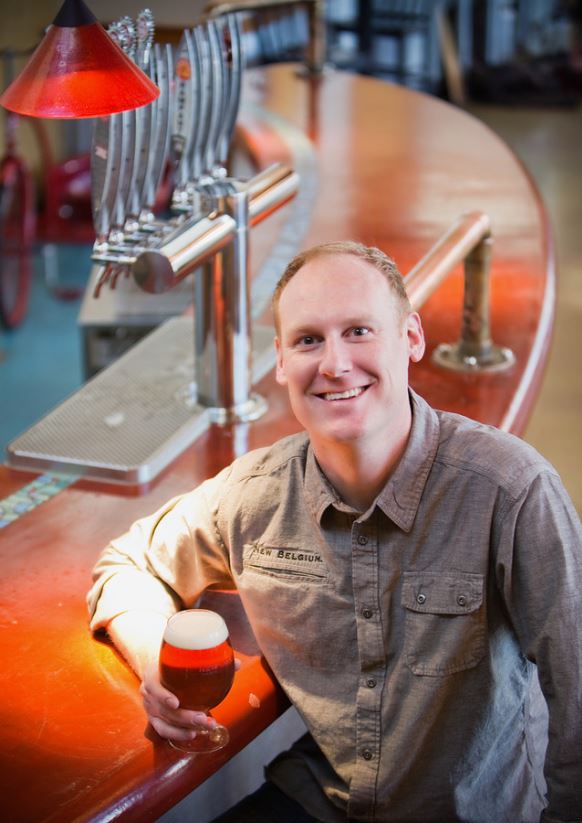Beer Growlers: Beyond the Basics
Advanced Materials, Filling Stations and Better Practices
So: how to make the best of what’s available.
Better Homes & Growlers

Matt Meadows serves as New Belgium’s Director of Field Quality, and Chair of the Brewers Association’s Draught Beer Quality Committee.
Matt Meadows serves as New Belgium’s Director of Field Quality, and Chair of the Brewers Association’s Draught Beer Quality Committee. New Belgium has done extensive testing on how quickly differences show between draft beer and that from a traditionally filled growler, with panelists noticing a carbonation difference after an hour, and aging effects after a day.
In bringing around what aspects an ideal growler would have, Meadows noted the following: it would be properly pressure rated for carbonated beverages (many current ones aren’t), less slippery than glass, impermeable to sunlight, easy to clean, compatible with counter-pressure filling stations, and completely without any air exposure. Headspace would be filled by carbon dioxide.
“There’s a lot of growlers that get close,” Meadows emphasized, “that put a lot of checks in a lot of those boxes… But I don’t know of anything that puts every check in every box.” As far as New Belgium goes: They fill growlers the more typical way at their Colorado location, via tube and foam, but will have a counter-pressure station at the new brewery in Asheville.
Meadows also outlined what folks can do to get the most out of their existing growlers (aside from careful washing and air drying): store them open to avoid moisture condensing within, minimize sunlight contact, and replace glassware weakened from age or scratches or etching. Do not etch glass growlers. And, while growlers should be consumed soon, be sure to do so safely. One’s mileage may vary, particularly for big beers that can tolerate ill treatment better, but the Brewers Association recommends that growlers be opened within three days of filling (read more facts about growlers from the Brewers Association).
Beyond that: Growler laws in states like California have recently loosened a bit, and there are increasingly more growler-filling retailer options. (A directory.) Travel safely, and drink fresh.
Ken Weaver is author of The Northern California Craft Beer Guide and editor of RateBeer Weekly. More at kenweaver.com.

All good points regarding purging oxygen, retaining CO2 and even temperatures but…what about cleaning and purging moisture so that bacteria doesn’t grow as an empty growler awaits its return to a filling station?
I invented the “Growler Collar” to solve the problem of ‘funky’ growlers being returned for refilling. The 5″ disc threads onto the top of 64 and 32oz clear or amber glass growlers and the new PET growlers of the same sizes. Three little feet elevate the growler off a counter for draining after a thorough rinsing with hot water…you can see when the growler is dry, usually ovenight (depending on humidity), that’s when the cap goes back on sealing the clean and dry growler for refilling when needed.
Growlers always have the logo/branding on them and Growler Collars can be custom imprinted as well and retail for $10. Patented and Made in the USA…just like your favorite craft beverage. Bottoms UP!
Staton Lorenz
http://www.growlercollar.com